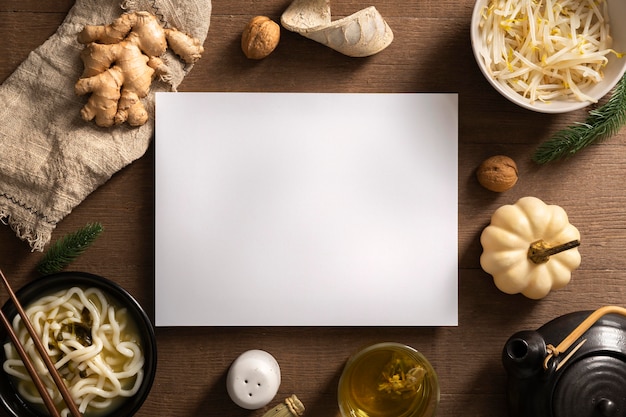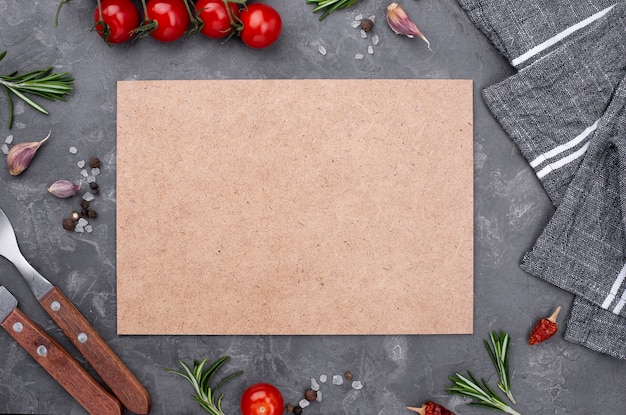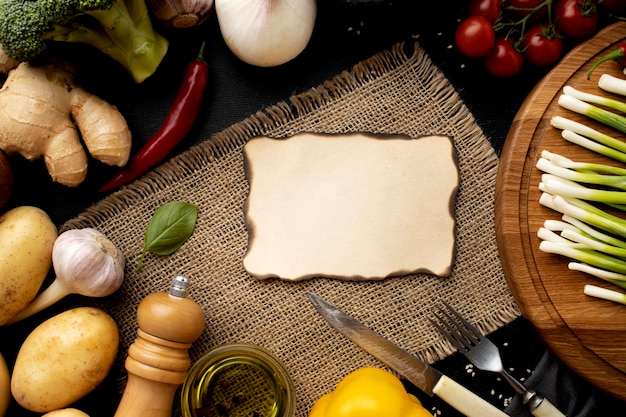(Part 1) Parchment Paper: The Basics

Before we dive into the cooking part, let’s rewind a bit and get our parchment paper facts straight. It’s basically a silicon-coated paper, sometimes called baking paper, that's specifically designed to keep your food from sticking to your baking sheets. It's the ultimate baking hero – no more scraping and scrubbing! Just a quick wipe, and you're back to a clean sheet.
Why is Parchment Paper so Popular?
Parchment paper is a staple in my kitchen, and I’m sure it’s a favourite in many other homes. Here’s why it’s so beloved:
- Non-stick, Non-Fuss: The silicon coating is the magic touch. It prevents sticking, ensuring your treats come out clean and beautiful. This makes it perfect for those delicate cookies, fragile pastries, and even those stubborn caramelised onions.
- Heat-Resistant: It can handle those high oven temperatures. So, whether you’re baking cookies or roasting a chicken, parchment paper won’t crumble under the pressure. It won’t melt or release harmful chemicals into your food.
- Reusable: Now, while parchment paper is designed for single use, you can often sneak in a few extra uses. It’s fantastic for lining your fridge drawers, preventing spills and making cleaning a breeze. A little bit of parchment can also be a lifesaver when wrapping leftover leftovers for easy storage.
- Convenient: You can find it in practically every supermarket. It’s easy to store and comes in a variety of sizes to suit your needs.
(Part 2) Can You Cook Directly on Parchment Paper? The Verdict

Alright, let's get to the heart of the matter. Can you cook directly on parchment paper? The simple answer is: it depends.
The Short Answer
For some recipes, yes, you can cook directly on parchment paper, while for others, it’s best to stick with your baking sheet. It all boils down to the cooking temperature, the type of food you're cooking, and the cooking time.
The Long Answer
Let’s break it down into the good, the bad, and the ugly – or, more accurately, the "when it works" and "when it doesn't work".
When Cooking Directly on Parchment Paper Works:
- Low to Medium Heat Cooking: For those recipes that require a gentle heat, like baking cookies, roasting vegetables, or even those delicate meringue cookies, parchment paper is your best friend. It’s unlikely to burn or char at these temperatures. It's like a cozy blanket for your food, ensuring it cooks evenly and doesn't stick.
- Recipes with Short Cooking Times: For those quick recipes, such as fish fillets, chicken breasts, or even those juicy shrimp skewers, parchment paper can come in handy. It's important to keep an eye on your food though. While parchment paper can handle quick cooking times, you don't want your food to stick or burn. A quick peek into the oven now and then is always a good idea.
- Recipes with Minimal Moisture: For recipes that aren't swimming in liquid, parchment paper can be a reliable choice. This includes things like roasted vegetables, chicken wings, and even some types of cookies, like those chewy chocolate chip cookies that don’t require a ton of moisture.
When Cooking Directly on Parchment Paper Doesn't Work:
- High-Heat Cooking: Parchment paper isn’t a fan of extreme temperatures. If your recipe calls for high heat, like grilling or broiling, it's best to avoid parchment paper altogether. It’s likely to catch fire or become brittle, possibly releasing harmful chemicals into your food. Stick to your trusty baking sheet, or try using a silicone baking mat, which is much better suited for high heat.
- Recipes with a Lot of Moisture: For those recipes that involve a lot of liquid, like stews, casseroles, or even those juicy meatloaf recipes, parchment paper won't be your best friend. The moisture will seep through the paper, creating a soggy mess. It’s better to stick to a baking dish or a dutch oven for these types of recipes.
- Recipes with Long Cooking Times: For those recipes that require a longer stay in the oven, especially at high temperatures, parchment paper is best avoided. It could burn or release harmful chemicals into your food. Again, your baking sheet is a safer bet for these kinds of recipes.
(Part 3) Exploring Alternatives to Parchment Paper

If you're unsure about using parchment paper for a particular recipe, fret not! There are plenty of other options you can use.
- silicone baking mats: These mats are like superheroes in the kitchen! They're heat-resistant, non-stick, and reusable. They're perfect for baking cookies, roasting vegetables, and even grilling. I personally love my silicone baking mats because they can handle those high temperatures. They're also easy to clean and can be used over and over again, making them a more eco-friendly choice.
- Aluminum Foil: While it’s not as great as parchment paper for baking, aluminum foil can be a reliable choice for roasting or grilling. Just make sure to fold up the edges to prevent food from spilling out. Aluminum foil is a good option for those recipes that require a little extra heat or a crispier finish. But remember, it’s not as non-stick as parchment paper or silicone mats, so you might need to grease it a bit.
- Greased Baking Sheet: The good old-fashioned method that never fails! This method is classic, reliable, and often the best choice for baking and roasting. Simply grease your baking sheet with butter or oil, and you're good to go. It’s a simple solution that works for most recipes. Just make sure to use a good quality oil for the best results.
(Part 4) parchment paper safety: A Few Cautions
When it comes to parchment paper, safety is paramount. Always be mindful of these tips:
- Use Cooking-Specific Parchment Paper: Make sure you’re using parchment paper that's specifically designed for cooking and baking. Don’t use regular paper, as it’s not heat-resistant and could release harmful chemicals into your food. You can usually find parchment paper in the baking aisle of your grocery store.
- Check the Parchment Paper Before You Use It: Make sure there are no tears, rips, or damage. Any imperfections could allow your food to touch the baking sheet directly, potentially causing it to stick or burn.
- Avoid Using Parchment Paper for Grilling or Broiling: Remember that high temperatures can cause parchment paper to ignite, putting you at risk. Silicone mats or aluminum foil are better options for these cooking methods.
- Don’t Use Parchment Paper for Recipes with Excessive Moisture: The moisture will seep through the paper, making a soggy mess, and potentially causing the paper to tear. Opt for a different method, like using a baking dish or aluminum foil.
- Always Supervise: Never leave parchment paper unattended while it’s in the oven. Keep a watchful eye, especially if you’re trying a new recipe with parchment paper for the first time. It’s better to be safe than sorry!
(Part 5) My Personal Parchment Paper Journey
I’ve been cooking with parchment paper for years, and it’s been a true game-changer. It's saved me countless hours of scrubbing baking sheets and has allowed me to explore new and exciting recipes without worrying about sticking. But I've also learned some valuable lessons along the way.
My Biggest Parchment Paper Lesson: Don't Overdo It!
My biggest mistake was trying to use parchment paper for everything. I was like, "This paper is amazing! It can handle anything!" But that's just not true. It’s important to know its limitations and use it appropriately.
My Favourite Parchment Paper Tip:
One of my favourite tips is to use parchment paper to line my fridge drawers. This prevents spills and makes cleaning up a breeze. It's a great way to give your fridge a little refresh and keep those spills at bay.
(Part 6) The Great Debate: Parchment Paper vs. Silicone Baking Mats
Let's talk about the ultimate baking showdown: parchment paper vs. silicone baking mats. Which one comes out on top?
Parchment Paper: The Pros and Cons
Here’s a quick rundown of the good, the bad, and the parchment paper:
| Pros | Cons |
|---|---|
| Non-stick surface | Single use (usually) |
| Heat-resistant | Can burn or char at high temperatures |
| Affordable | Not as durable as silicone mats |
| Easy to use | Not suitable for all recipes |
Silicone Baking Mats: The Pros and Cons
And now, let’s take a closer look at silicone baking mats:
| Pros | Cons |
|---|---|
| Reusable | Can be more expensive than parchment paper |
| Heat-resistant | Can be difficult to clean |
| Durable | Not as versatile as parchment paper |
| Non-stick surface | Can warp at high temperatures |
So, Who Wins?
It really depends on your individual preferences and needs. If you’re on a budget and need an easy-to-use option for baking, parchment paper is a great choice. However, if you want a reusable, durable, and high-heat option, a silicone baking mat is the way to go. Ultimately, it comes down to what works best for you and your kitchen.
(Part 7) Choosing the Right Parchment Paper
The world of parchment paper can be a bit overwhelming. There are so many different brands and types. Here's a quick guide to help you choose the right one:
1. Material Matters:
Make sure you're buying parchment paper that's designed for cooking and baking. Avoid any paper labeled as "waxed" or "greaseproof," as they're not safe for cooking. You want to make sure the paper is food-safe and designed for high temperatures.
2. Size and Shape:
Parchment paper comes in a variety of sizes and shapes. Choose the one that's best for your needs. If you're baking cookies, you might need a smaller sheet, while roasting a large turkey might require a larger sheet. Consider the size and shape of your baking sheet and the amount of food you're cooking.
3. Quality Counts:
Parchment paper quality can vary, just like any other kitchen product. Look for paper that's thick and durable, and avoid anything that feels flimsy or flimsy. Good quality parchment paper will be less likely to tear and will provide a better cooking experience.
4. Read the Instructions:
Always read the instructions on the packaging. Some brands might have specific guidelines for temperature and cooking time. It’s always a good idea to check the recommendations for the best results.
(Part 8) FAQs: Your Parchment Paper Questions Answered
I’ve got answers to some of the most common questions about parchment paper:
1. Can I Reuse Parchment Paper?
While parchment paper is designed for single use, you can often get away with using it a couple of times. It’s great for lining fridge drawers, preventing spills, and making clean-up a breeze. However, if the paper is discolored or brittle, it’s best to toss it and use a fresh sheet.
2. What Happens if I Cook at a High Temperature on Parchment Paper?
High temperatures are a parchment paper no-no. Cooking at high temperatures can cause it to catch fire or release harmful chemicals into your food. It’s crucial to stick to low to medium heat when using parchment paper. If your recipe requires high heat, choose a different cooking method, like using a baking dish or aluminum foil.
3. Is Parchment Paper Safe for the Microwave?
Absolutely not! Parchment paper is designed for ovens, not microwaves. It’s not safe to use in the microwave. Microwaving parchment paper can cause it to ignite or release harmful chemicals. Stick to microwave-safe dishes or containers.
4. Can I Use Parchment Paper Instead of Greaseproof Paper?
Greaseproof paper is primarily for wrapping food and preventing sticking. It’s not typically used for baking or cooking and isn’t heat-resistant. Parchment paper, on the other hand, is specifically designed for cooking and baking and can handle high temperatures.
5. Can I Put Parchment Paper in the Dishwasher?
No way! Parchment paper is made of paper and will dissolve in the water and heat. Always dispose of it properly after use and never put it in the dishwasher.
(Part 9) Conclusion: The Parchment Paper Verdict
So, can you cook directly on parchment paper? It's not a simple yes or no. It depends on the recipe and your cooking needs. For low-to-medium heat cooking and recipes with short cooking times, it can be a fantastic choice. But for high-heat cooking, recipes with a lot of moisture, or long cooking times, it’s best to stick to your trusty baking sheet or explore other cooking methods like using a baking dish, aluminum foil, or silicone baking mats.
No matter your cooking style or level of experience, parchment paper can be a valuable tool. Just remember to use it wisely, follow safety precautions, and enjoy the delicious results!
Everyone is watching

How to Cook Frozen Lobster Tails Perfectly: A Step-by-Step Guide
RecipesLobster. Just the word conjures up images of lavish meals, special occasions, and a taste of luxury. But let's...

Pigs in a Blanket Cooking Time: How Long to Bake for Perfect Results
RecipesAh, pigs in a blanket. Just the name conjures up images of those delightful little parcels of crispy pastry en...

Pork Fillet Cooking Time: How Long to Cook It Perfectly
RecipesPork fillet, or tenderloin as it's sometimes called, is a real favourite in our house. It's so versatile, and...

The Ultimate Guide to Cooking Delicious Frankfurters
RecipesLet's face it, we all love a good frankfurter. It's a classic, simple, and always satisfying. But let's be rea...

Wolf Meat Recipes: A Guide to Cooking Wild Game
RecipesLet's be honest, you don't see wolf meat at your local butcher shop every day. It's a bit of a wild card, but ...
